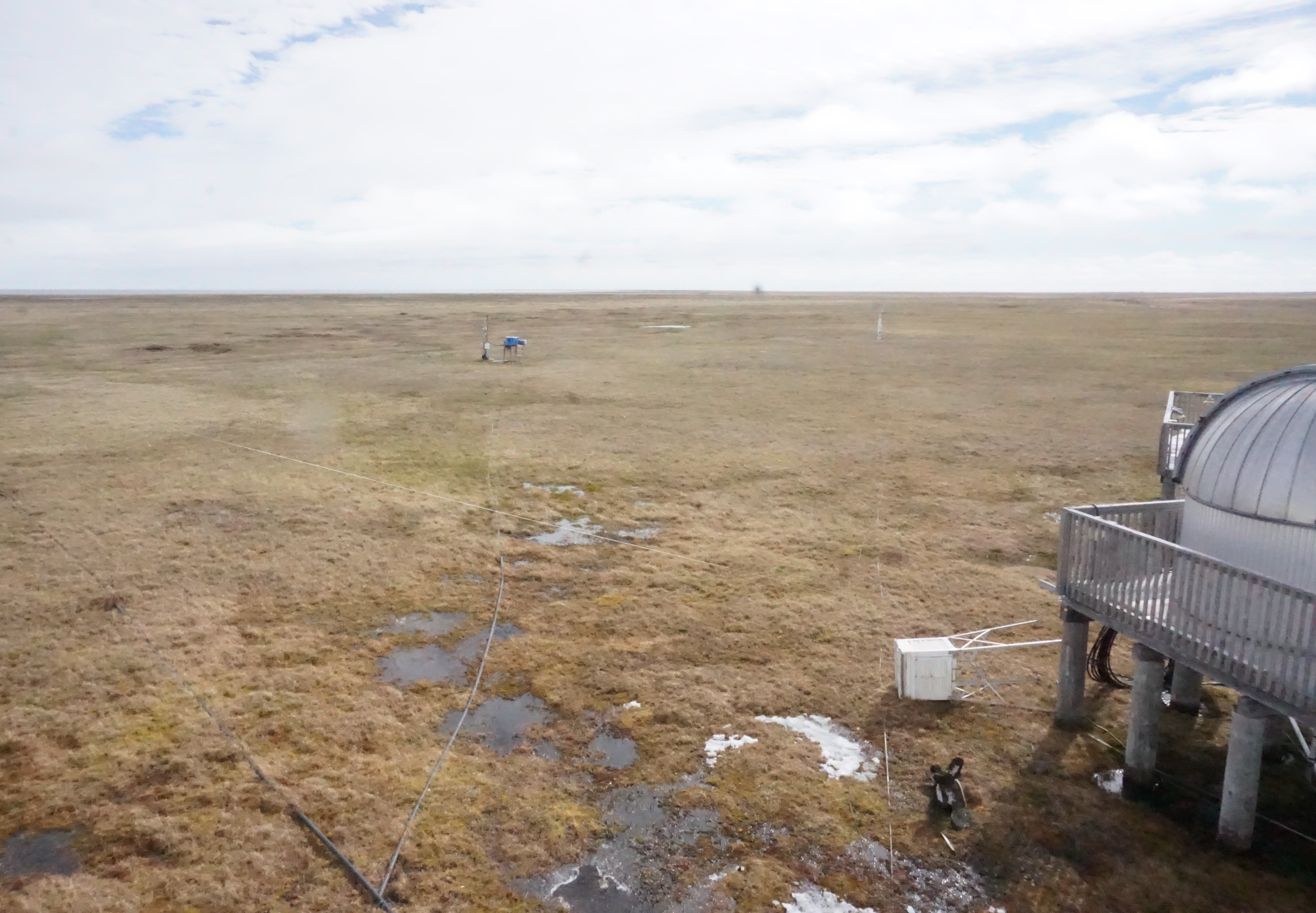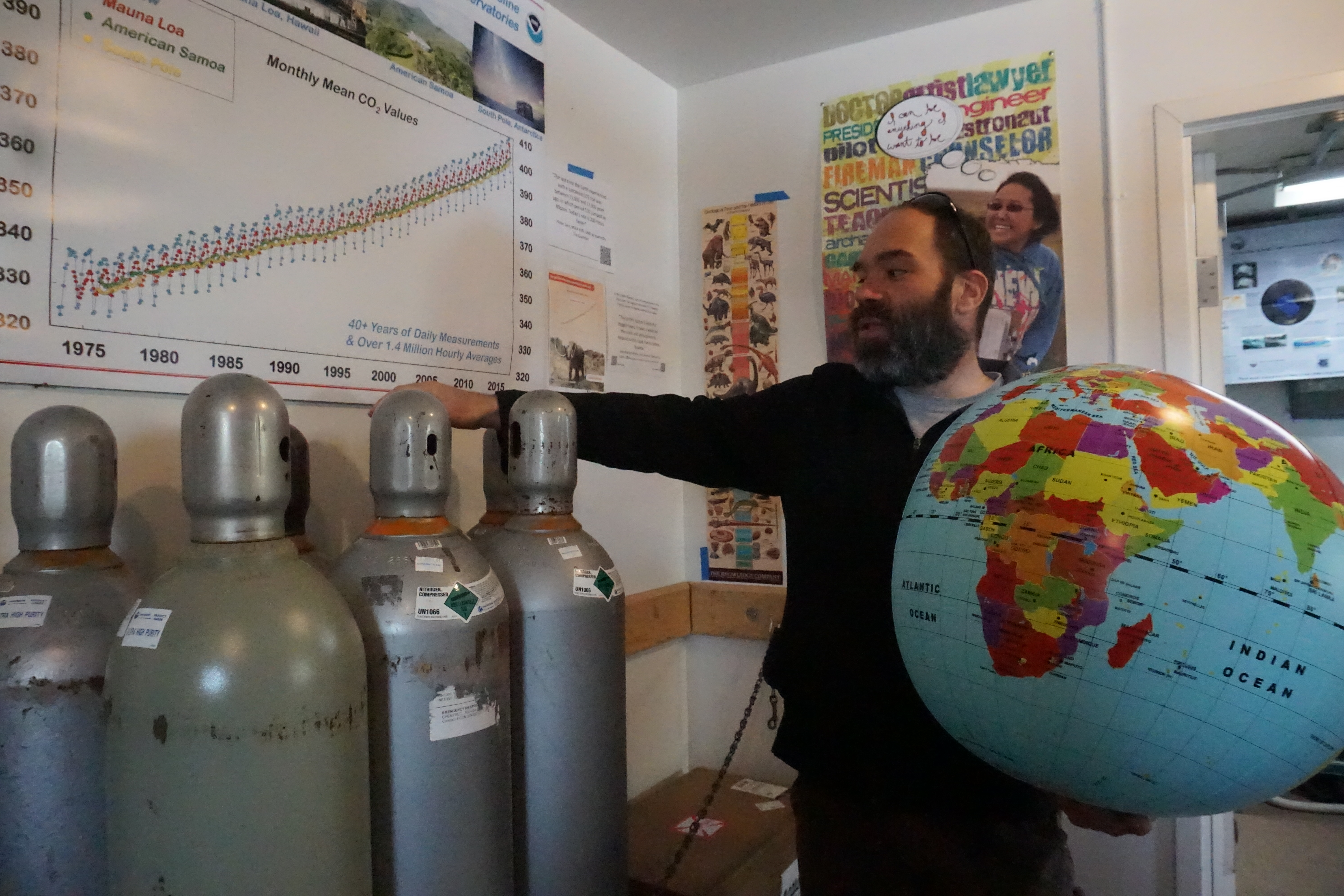Tundra soils are releasing more carbon faster — and plant growth can’t offset the trend

The flat tundra on the outskirts of Utqiagvik, the northernmost U.S. community, looks quintessentially Arctic.
But beneath the treeless surface, according to new research, there are changes underway that are nudging this far-north soil toward a state more like that in soils of the boreal forest regions farther south — and setting up what is expected to be an ever-increasing release of underground carbon into the atmosphere.
Climate warming over the last four decades has accelerated the annual cycle of plant growth and plant decomposition, making wider the swing between carbon absorption and carbon release, according to a study published in the journal Science Advances that relied on measurements taken at the National Oceanic and Atmospheric Administration’s Barrow Observatory. The difference between summer carbon uptake and winter carbon release, called “seasonal amplification,” is widening.
While warming temperatures on Alaska’s North Slope have stimulated more plant growth, and thus more photosynthesis that takes carbon dioxide out of the atmosphere, they also stimulate more decomposition of sequestered soil carbon during the non-growing season, and thus more release of carbon into the atmosphere.
The rates of increase do not match.
Thanks to delayed onset of winter cold, the release of carbon from the soil is outpacing the uptake of carbon by tundra plants, the study finds.
The cold season doesn’t start nearly as early as it has in the past, and the cold is not as intense as it was in the past,” said co-author Charles Miller of the NASA’s Jet Propulsion Laboratory. Soils that are warmer in fall and winter allow for microbial decay of old plant material, resulting in more carbon dioxide release.
Another ominous change: New plant material put into the ground is decomposing faster. It used to take, on average, 100 years for dead plant matter to fully decompose in the cold Utqiagvik soils, but now that cycle has sped up by almost 15 percent.
“This all suggests that the tundra is getting more boreal,” Miller said. In boreal soils, the carbon life cycle is about 60 to 80 years, he said.
The study results show that the tundra around Utqiagvik and probably elsewhere in the Arctic is releasing more atmospheric carbon that it is capturing. “You’ll get more and more of a carbon source from tundra ecosystems in the future,” Miller said.

Don’t expect increased Arctic plant growth in the summer to offset the increased carbon release at other times of the year, he cautions. No matter how lush tundra plant life becomes, there is a fixed limit on the period of photosynthesis and, with it, carbon absorption — daylight at this high latitude dwindles dramatically in the fall and disappears entirely in winter.
Still being studied, Miller said, is how much of the very old carbon — the material frozen into the earth for thousands of years — is streaming into the atmosphere. It is still unclear whether the faster turnover below ground is affecting the ancient carbon as well as the recent carbon, he said.
If that old carbon gets releases, that will be a “one-way” process that will pour more greenhouse gases into the atmosphere, adding to the loads created by fossil fuels, Miller said. “That becomes a natural climate feedback system that pretty much goes only in one direction,” he said.
The Barrow Observatory is one of four around the world — stretching from the Arctic to the Antarctic — where NOAA tracks atmospheric carbon levels.
There, scientists working since the 1970s have recorded a steady increase in atmospheric carbon and a similarly steady increase in temperature, with seasonal variations that make the line jagged. In the four decades of atmospheric monitoring, carbon levels in the atmosphere have increased by 80 parts per million. A threshehold of 400 parts per million — considered a dangerous milestone — was reached in 2012.
The last time there was such a large increase in atmospheric carbon, the rise of 80 parts per million occurred much more gradually, over a period of 5,000 or 6,000 years, said Bryan Thomas, the observatory’s station chief.
Not so anymore. “We’ve changed things so quickly,” he said.
A chart at the observatory’s entrance that displays the carbon and temperature trends speaks for itself, Thomas said.
“It’s not my role to say why this happened or ask what we can do about it, but it is my job to make sure that the graph keeps going,” he said.
Although it is the burning of fossil fuels that is, for now, pouring most of that carbon into the atmosphere, the subject is sensitive in Utqiagvik, where there is a heavy dependence on the oil industry of Alaska’s North Slope.
But even if carbon releases from fossil fuel stop, the warming will likely continue because temperature trends lag the atmospheric carbon dioxide trends, he said.
“As an Arctic resident, as a voter, I say this worries me because I don’t know if we’ve seen all the warming we’re going to see from the carbon that’s already in the atmosphere,” he said.
Yereth Rosen is a 2018 Alicia Patterson Foundation fellow.